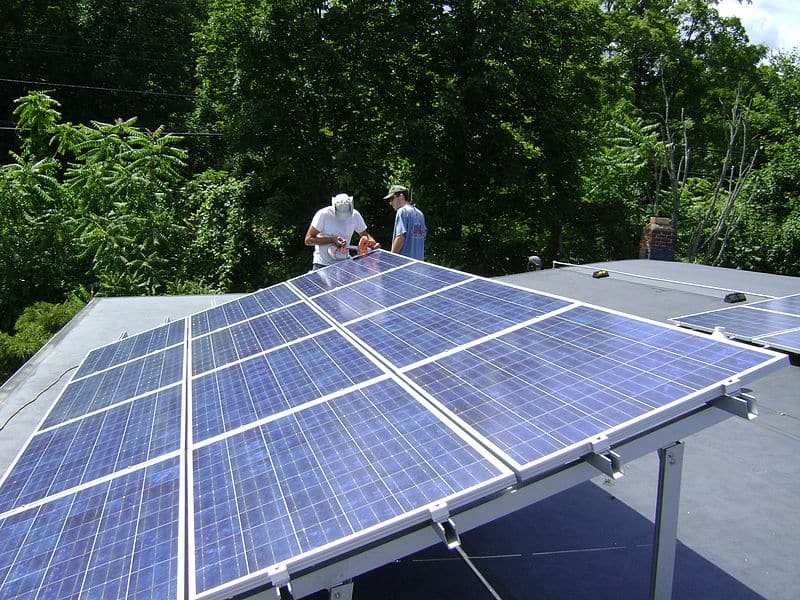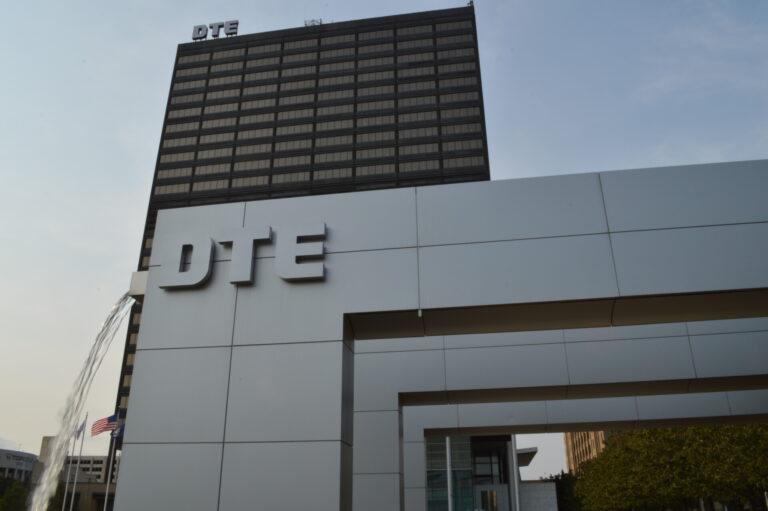Duke Energy says it supports solar, despite backing Amendment 1. We fact-check.

Florida’s biggest utility companies, including Duke Energy, have funded the effort to pass Amendment 1, a deceptive ballot initiative that purports to be “pro-solar,” but in fact is an attack on customer-owned solar power in Florida. Audio obtained last month by the Center for Media and Democracy and the Energy and Policy Institute confirmed that deceptive scheme.
Despite those revelations, Duke Energy has tried to keep the ruse alive that it somehow both supports solar power, and the anti-solar Amendment 1. Duke issued a statement expressing all that on October 26, and its press release was riddled with even more misleading information about the company’s stance on solar energy. We thought we’d offer them our fact-checking services, free of charge.
Below you can find Duke’s statement, along with corrections and explanations of Duke’s attempted deception in red:
A MESSAGE FROM DUKE ENERGY REGARDING AMENDMENT 1
October 26, 2016
Website: https://smartsolarfl.org/
Twitter: Yes On 1 For The Sun @SmartSolarFL and #1ForTheSun
Facebook: Yes On 1 For The Sun http://www.facebook.com/smartsolarfl/
Duke Energy is a strong supporter of solar energy. We stand by the right of individual businesses and homeowners to harness energy from the sun to both save money and protect the environment. We believe in solar technology and are committed to advancing the use of solar energy in Florida. It is in the best interest of consumers and our state’s renewable energy future to address solar advancement policies transparently, comprehensively and collaboratively. We want a balanced approach that is fair to all our customers. That is why we support the Consumers for Smart Solar and their Smart Solar Amendment effort.
[su_note note_color=”#e9e9e9″ text_color=”#ff0000″]Duke says it is a strong supporter of solar energy, but its track record and support for “Consumers for Smart Solar” belie that statement. Amendment 1 paves the way for Duke, FPL and other utilities to add fees and attack policies that would make it impossible for solar customers to save the money they’ve fairly earned for the power they produce. Similar efforts by utilities in other states, like Nevada, have crippled the solar industry when successful. The vice president of the James Madison Institute, a pay-to-play think tank funded by utilities and other fossil fuel interests, accidentally exposed this very plan in a leaked audio recording.[/su_note]
It’s important to note that customers are not paying for the contributions or lobbying work. Dollars contributed to Consumers for Smart Solar come from shareholders.
A significant part of Duke Energy’s $23.4 billion in total revenues (and all of its revenues in Florida) comes from customer’s bills, so saying that Duke’s lobbying and political contributions are funded “by shareholders” is misleading.
An investigation by the Energy and Policy Institute confirmed that Duke’s customers have directly foot the bill for Duke’s payment to the Edison Electric Institute, the industry association which has led utilities’ attack on rooftop solar nationally, and offered support to members like Duke and FPL in their attack on solar.
It’s also worth wondering how Duke’s shareholders feel about wasting $6.7 million on a deceptive political effort that has deeply eroded Duke’s Florida customers already shaky trust in the company.
Duke Energy Florida is committed to interconnecting our customer’s private solar. We support our customers that own private solar and have helped these customers expand the use of their solar at their homes and businesses from less than 1 MW of solar in 2008 to more than 35 MW tied into to the Florida power grid today. We currently have over 3,800 Florida customers interconnected and relying on the power grid while using their own private solar. Over the past five years, we’ve seen over a 400 percent increase in the number of customers interconnecting their solar generators to the power grid.
The solar growth which Duke cites happened in spite of the company’s efforts, not because of them, and are due to plummeting costs for solar energy globally. Rooftop solar growth in Florida has been tepid compared to other states despite it being the Sunshine State, because Duke and other Florida utilities have blocked an open market for solar power in the state. Duke has fought to keep customer-owned free-market solar out of Florida and North Carolina. The solar growth which Duke cites happened in spite of the company’s efforts, not because of them, and are due to plummeting costs for solar energy globally. Rooftop solar growth in Florida has been tepid compared to other states despite its “Sunshine State” moniker, because Duke and other Florida utilities have blocked an open market for solar power in the state. Duke has fought to keep customer-owned free-market solar out of Florida and North Carolina.
On average, Duke Energy Florida is supporting more than 100 residential and business customers a month connect private solar on their property to the grid. The company has established a renewables service center to make it easier for customers to interconnect and is researching various community solar platforms that can give all of our customers the opportunity to support more solar generation in Florida.
We are proud of the advancements we’re making in Florida’s solar landscape. We have a strategic, long-range plan to install up to 500 megawatts of solar power in the state by 2024 (35 megawatts of solar by 2018).
Duke’s implicit message is that it supports solar, as long as Duke gets to build and own the solar. That message is demonstrably false. According to Duke’s own plan it submitted to Florida regulators in April, 2016, it plans to generate 2.2% of its power from solar energy in 2025. See 2-13. As for today, the number is literally a rounding error: Duke’s current solar generation registered as 0% in 2016. (See 2-13 of Duke’s plan, or image below)

Our approach is indicative of our future-focused strategy to offer renewable energy options for our customers long term. Announced in Oct. 2015, the 5-megawatt Perry Solar Facility is now operating on 22 acres of utility-owned land in Taylor County. The solar plant will use approximately 22,000 solar panels and will be roughly the size of 17 football fields. (Note: Groundbreaking ceremony was January 22, 2016. The official unveiling ceremony is scheduled for Oct. 19, 2016.)
The new Duke Energy owned and operated Osceola Solar Facility officially began commercial operation on May 12 generating an estimated 4-megawatts of carbon-free energy. Built on 17 acres next to a Duke Energy substation in Kenansville, the solar power plant is the first in our strategic, long-range solar plan for Florida. One megawatt of large-scale solar is equivalent to approximately 200 typical residential rooftop systems. The number varies by state and conditions.
The company is also working on wholesale solar projects. Earlier this year, the company unveiled a five-megawatt solar plant in the shape of a “not-so-hidden-Mickey” to serve the Walt Disney World Resort through an agreement with the Reedy Creek Improvement District.
Here, Duke spends three paragraphs of its press release boasting about 14 MW of solar capacity. Duke operates 9,101 MW (see 1-2) of capacity in Florida, so all of this ink is spilled over .15% of its overall capacity. The other 99.85% is coal, gas and nuclear power.
Over the past eight years, Duke Energy has invested more than $4 billion in wind and solar facilities in 12 states including the company’s Stanton Solar Farm located in Orange County, which became operational in 2011.
Duke Energy Renewables, a subsidiary of Duke entirely separate from Duke Energy’s Florida operation, did the bulk of this spending. Florida customers benefit from almost none of this.
Our Stanton Solar Farm consists of 25,175 solar photovoltaic (PV) module and generates 6 megawatts of electricity. It supplies electricity to Orlando Utilities Commission under the terms of a 20-year power purchase agreement.
Hey, it’s 6 more whole megawatts to add to the other 15! This electricity doesn’t benefit Duke’s customers since it’s all sold to Orlando, but for kicks we can add it to the earlier tally: if you counted this farm, Duke would be up to .23% of its overall capacity coming from solar.
The company plans to invest about $3 billion in renewable energy over the next five years.
It’s unclear whether this investment would happen in Florida, though Duke’s track record and state plans to regulators indicate not.
Do you support net metering?
We support our customers’ right to add solar arrays to their property. We also support policies that have reasonable consumer protections.
The current net metering policy needs updating, and we believe customers who use the power grid continuously, like solar customers, should pay for grid access, grid services, and the back- up power they use. We also believe there are opportunities to put various types of programs in place that support customer participation in renewable energy (like a solar advancement fund). We support a common sense approach that would be fair for all Floridians.
Incentives, including net metering, need to be considered in the broader context with other energy policies that can comprehensively address Florida’s complex energy needs.
As more customers net meter, we believe it will become increasingly important to appropriately value solar and grid resources so that customers who net meter are also paying their share for the electric grid services they receive while being appropriately compensated for the generation they produce.
Duke spends a few paragraphs here dancing around the question of whether it supports net metering, which allows customers to sell the excess electricity their solar panels generate to Duke for the grid to benefit from it. The answer is no, Duke does not support net metering. Duke justifies that position, vaguely here, with a critique that customers who net meter don’t “pay their share.” But a host of studies have shown that the benefits that rooftop solar customers provide to the wider grid outweigh the costs.



